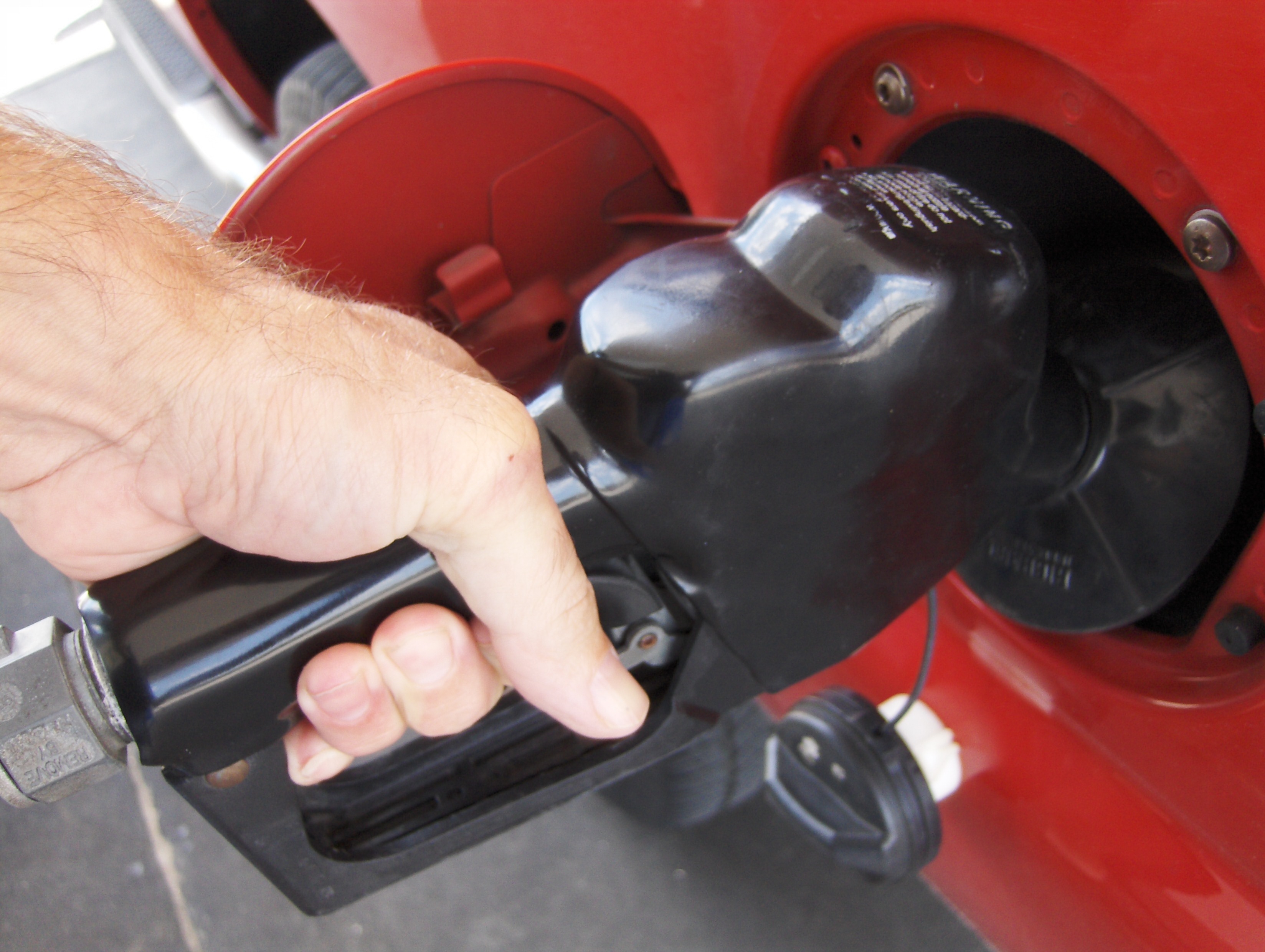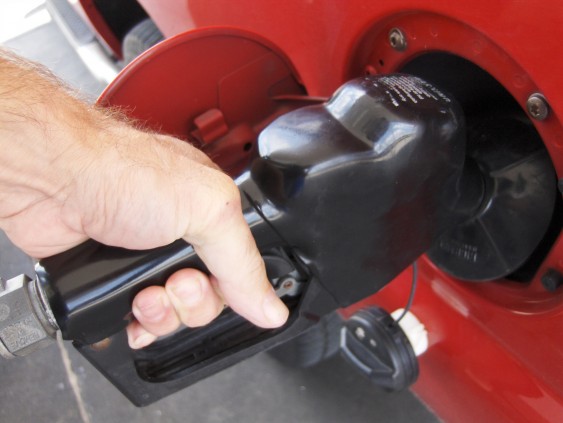Climate hawks know the best way to decarbonize our economy is to electrify everything, fast. But we’ve made little progress electrifying transportation, the source of over half of the carbon emissions in Oregon and Washington. Shared fleets of autonomous electric vehicles—robo-taxis—could drive us to a low-carbon future much faster than the current plodding accretion of electric vehicles among individual owners.
How slow is it? Despite all the buzz about Tesla, electric vehicles (EVs) have barely made a dent in Cascadia’s vehicle fleet. Only 20,000 out of the 4.6 million registered passenger vehicles in Washington were electric, less than half a percent. Unless something dramatic happens, the state’s existing polluting cars and trucks will remain on the roads for decades. I dug into Washington’s Department of Licensing database to estimate just how long the polluters will persist, and the data on durability is seen below.

Original Sightline Institute graphic, available under our free use policy.
Almost all cars stay on the road for at least a decade; then they start to slowly exit the fleet. At two decades, about half of vehicles are still on the road. Three decades in, the cohort finally dips below 10 percent of its original size. Even with increasingly bullish predictions on future EV sales, the durability of existing and future vehicles with internal combustion engines will retard the electrification of transportation.
Electric cars look certain to grow as a share of new car sales. The steady fall in lithium-ion battery prices and the related decreases in vehicle costs have convinced analysts that EVs will move into the mainstream. Bloomberg, for example, now predicts EVs will represent 54 percent of new car sales in 2040, up from its prior estimate of 35 percent and nearly five times other estimates of future EV penetration. If we assume a straight line increase in EV sales that hits the optimistic Bloomberg forecast, the electrification of the passenger vehicle fleet in Washington over the next 23 years will look slow as molasses, as seen below.

Original Sightline Institute graphic, available under our free use policy.
Note that 2 million cars (37 percent) that will be driving in 2030 are already on the road today. In 2030, EVs (the palest wedge atop the figure) will comprise 11 percent of the fleet and by 2040 will be less than 30 percent. And this scenario assumes one of the most optimistic forecasts of future EV sales. The transition will be slow because even with all the aforementioned decreases in the cost of privately owned electric vehicles, EVs will not be cheap enough to convince us to abandon still-operable gas cars. We’ll keep driving our gas cars until they won’t go anymore.
But if we shift our transportation consumption from individual vehicle ownership to buying transportation services from fleet providers, electrification could happen fast. Electric robo-taxis would allow people to share a fleet of vehicles and only pay for what they use, rather than the whole cost of a vehicle that sits idle and depreciating 23 hours a day.
Electric robo-taxis would allow people to share a fleet of vehicles and only pay for what they use, rather than the whole cost of a vehicle that sits idle and depreciating 23 hours a day.
Robo-taxi providers will choose electric vehicles for this service, not out of concern for greenhouse gas emissions necessarily, but because electric fleet vehicles will cost less than half as much to own and operate as gasoline-powered vehicles. With high utilization inside a fleet, electric cars will likely have much lower maintenance, depreciation, and energy costs than vehicles powered by gasoline.
The cost per mile of autonomous electric transportation service when delivered in fleets with thousands of vehicles could be less than one third the current costs for auto owners who drive their own cars. The savings for consumers who shed a car and use robo-taxis instead promise to be many thousands of dollars per year—many thousands for each private car they set free. Already, Lyft and Uber are pushing up the car-free populations of Cascadia’s urban centers. When their vehicles and those of new competitors are reliably and safely self-driving, the costs will plummet and allow car ownership to go into free fall.
Tony Seba and James Arbib at ReThinkX make the case that this change could happen fast. They foresee a conversion from individual ownership to robo-taxis or what they call Transportation as a Service (TaaS) over a single decade. They have estimated the resulting reduction in petroleum consumption in the US light-vehicle fleet between 2020 and 2030. I converted their petroleum consumption forecast to millions of metric tons of carbon equivalents and then compared the resulting TaaS forecast with a base case forecast prepared by the US Energy Information Agency as part of the 2018 Annual Energy Outlook.

Original Sightline Institute graphic, available under our free use policy.
This shows that by 2030, with rapid deployment of TaaS, carbon emissions from transportation could be one tenth of the EIA’s baseline forecast. People may not embrace TaaS as fast as Arbib and Seba think, but whatever the adoption rate, the shift to electric robo-taxis will reduce emissions far below the current trend lines.
With smart public policy, we can mitigate the downsides and help accelerate deployment to realize the benefits as soon as possible.
Getting the public policy right does not have to be a heavy lift politically. Climate hawks don’t need to ask for big tax increases or massive public investment; our existing road and highway networks and electric grid have enough capacity. Those concerned about greenhouse gases from transportation don’t need to advocate for regulations requiring people to sacrifice comfort or convenience. People will choose zero emission service from robo-taxi providers because it is cheaper and better than driving their old car and because it is good for the environment.
Broadscale adoption of robo-taxis has potential downsides and represents a fundamental disruption to our transportation system but the upsides include big cuts in greenhouse emissions, improved mobility, and lower costs.
Climate hawks could offer an important voice in support of efforts to establish clear rules for existing ride-sharing companies like Uber and Lyft and their future competitors. These companies now confront inconsistent regulations across local jurisdictions that raise costs and create uncertainty. For example, Senate Bill 6043 in the Washington legislature would have taken an important step towards establishing a sensible framework that clarifies the respective roles of state and local governments in regulating Uber and Lyft.
Climate hawks have built coalitions with labor and social justice groups to support carbon pollution pricing. Those same constituencies will care deeply about the potential job losses associated with self-driving vehicles. Their voices need to be heard on how best to mitigate those disruptions and create pathways to new employment so the benefits of this clean, new low-cost transportation mode accrue to everyone.
Claims from auto companies about self-driving capabilities deserve some skepticism. After all, the same companies lied repeatedly about the consequences of safety and environmental regulations in the past. Volkswagen perpetrated a massive international fraud to hide the actual emissions of their diesel cars. After battling the auto industry and eventually winning on the Oregon and Washington Clean Car Laws in 2005, Cascadia’s climate hawks will want to take a careful look before making common cause with a former foe. But climate solutions can show up in surprising places, including the back seat of an autonomous electric car built and operated by General Motors.
Our best, and perhaps only, hope to slash greenhouse gas emissions from cars and trucks in the next one to two decades is to adopt a sensible regulatory framework that enables rapid deployment of electric robo-taxis when the technology is ready.











Richard Gelb
A few of the delightful co-benefits of a rapid uptick in EV deployment would be the reduction of air pollution – and the fugitive motor oil and antifreeze from today’s vehicles (and vehicle collisions) that plagues Puget Sound and its salmon.
DaveB
I would dearly like this to be right, but c’mon, Robotaxis (powered by anything) are only going to happen in the biggest cities – start by thinking of the service areas and cities where Car2Go and ReachNow operate today. “Where Uber and Lyft operate” will come later.
And please, while agree it’s a very promising strategy, is it the ONLY way. Hardly.
asdf2
At first, yes, but the coverage area *will* expand rapidly. Even Uber and Lyft, with human drivers to pay, already cover a much wider area than they did even 1-2 years ago. Suburbs like Issaquah, Redmond, Lynnwood, and Federal Way all have reliable TNC service now at 11:30 PM. Just 2-3 years ago, these areas mostly didn’t.
Even LimeBike has started to organically expand beyond the Seattle city limits, as the bikes slowly work their way up the Burke-Gilman/Sammamish River Trails into places like Bothell, Woodinville, and Redmond. Unfortunately for Car2Go, due to the combination of much higher vehicle costs and the need to authorize each and every parking area (because the vehicles take up so much more space than bikes, when parked), expansion of the service area is much more difficult.
With respect to Taas, when the costs come down, adoption will only go up. Right now, maintaining and Uber/Lyft vehicle on standby in a place like Cle Elem doesn’t make economic sense. Remove the human driver from the equation, and it, all of a sudden will make sense – especially once the larger Seattle market becomes saturated.
Eventually, we will reach a point where even remote trailheads that require driving up miles of bumpy forest service roads will be accessible by robo-taxis. They’ll be one of the last areas to be served, but given enough time, it will happen.
Jesse
Dave,
Most of the population lives in cities at this point. Even more want to live here (and would, if we let enough housing be built.)
How many more trips do you think people would take with TaaS if it were a third of the current costs? Imagine something that got from, say, Ballard to Green Lake or Shoreline, door to door, for the same cost as bus fare?
I bet a lot.
For example, I was totally willing to pay the expected $25 from the airport to my doorstep. However, with my gf and her toddler, that quickly ballooned to $60, so we took a combination of light rail and a ride from the end stop for $8. However, it took 3x longer. We were just lucky to have a good-natured toddler that hour.
asdf2
Widespread adoption of TaaS is going to force two big government interventions that the authors of the paper don’t seem to be anticipating. First, TaaS trips *will* be taxed, if for no other reason than to fund the maintenance of the roads when the revenue stream from the existing gas tax dries up.
Next is congestion management. If TaaS really takes off the way the authors envision, whatever efficiency autonomous vehicles create in road capacity will inevitably be gobbled up by induced demand. The end result is that public transportation, at least high-capacity transit in congested areas becomes just as important is ever. In the case of Seattle, four-car Link trains running every 3 minutes can carry a ton people, and there simply isn’t room to have all those cars clogging up the downtown streets – even if the vehicles are autonomous *and* people share rides, the space just doesn’t add up. In fact, it is quite possible that avoiding gridlock will require charging hefty tolls to drive on downtown streets during peak hours, to the point where taking a $0.10/mile robo-taxi into downtown would cost just as much as driving a person car into downtown and paying for parking in today’s world.
On the other end of the spectrum, bus routes in places like Sammamish will become obsolete – there’s no reason to ride it when you can ride a robo-taxi for $0.10/mile, and the capacity of a bus simply isn’t needed out there for congestion management.
Anton
You forget one important part. With TaaS you are able to price differentiate. High demand, higher price, low demand, lower price. Evening out road use, removing congestion.
Angela C.
Just changing the energy supply to cars only solves one small piece of a very large problem. So far, taking people off public transport and using Uber has shown to add more cars to the road adding to the larger problem so making cars cheaper to run, even if cleaner, is still adding cars to the road. For sustainable community development, we need to have fewer cars on the road with fewer reasons to drive them. We need system change where people can work from home or closer to home and walk to public transportation only when needed. This starts with focusing on ways to buy local and have other goods delivered more efficiently. Time to think of how to make cars begone not just fossil fuels.